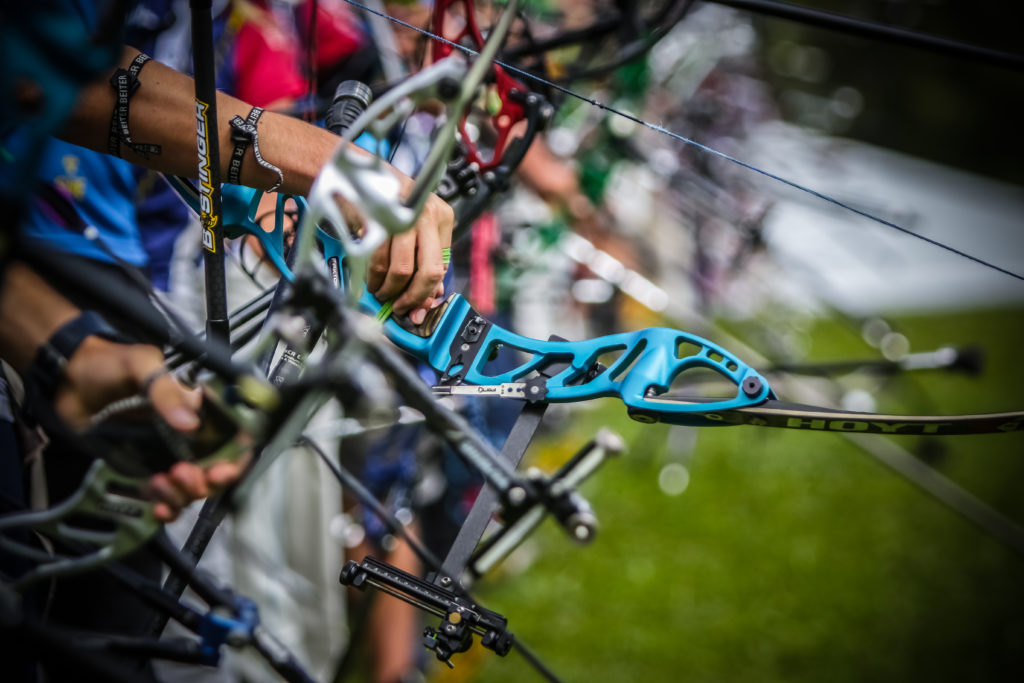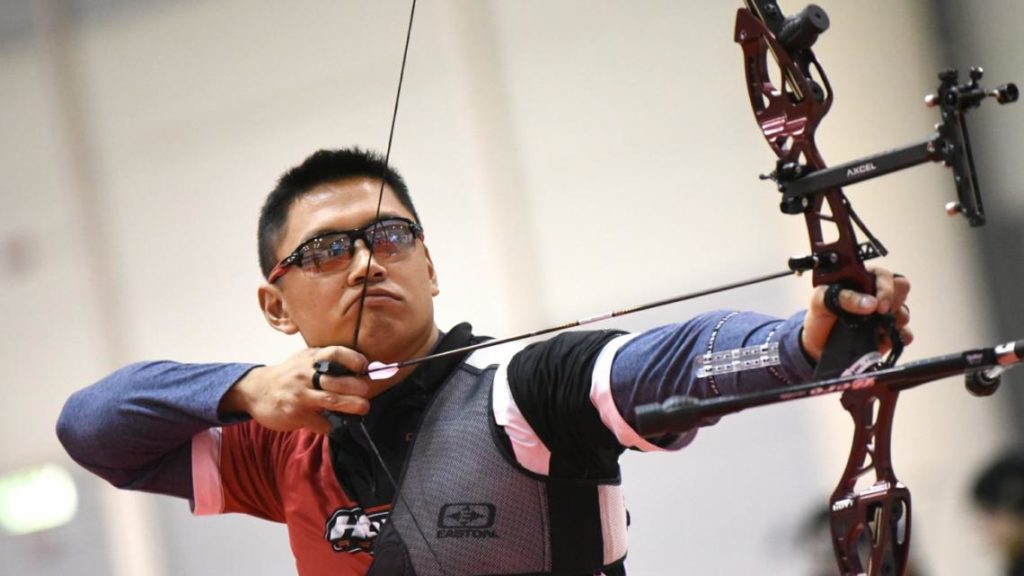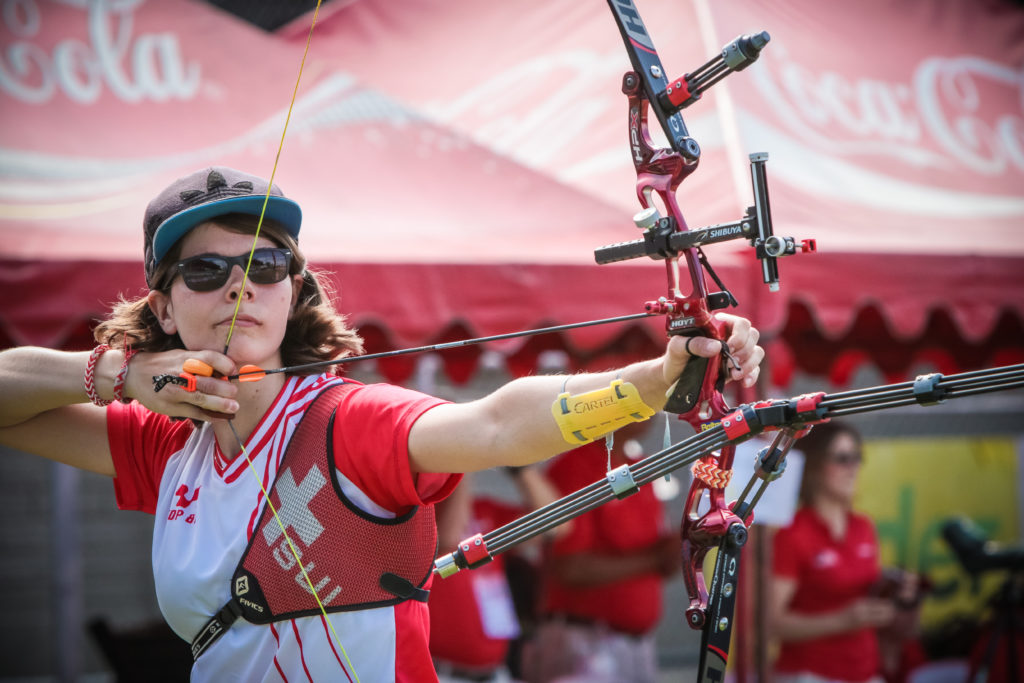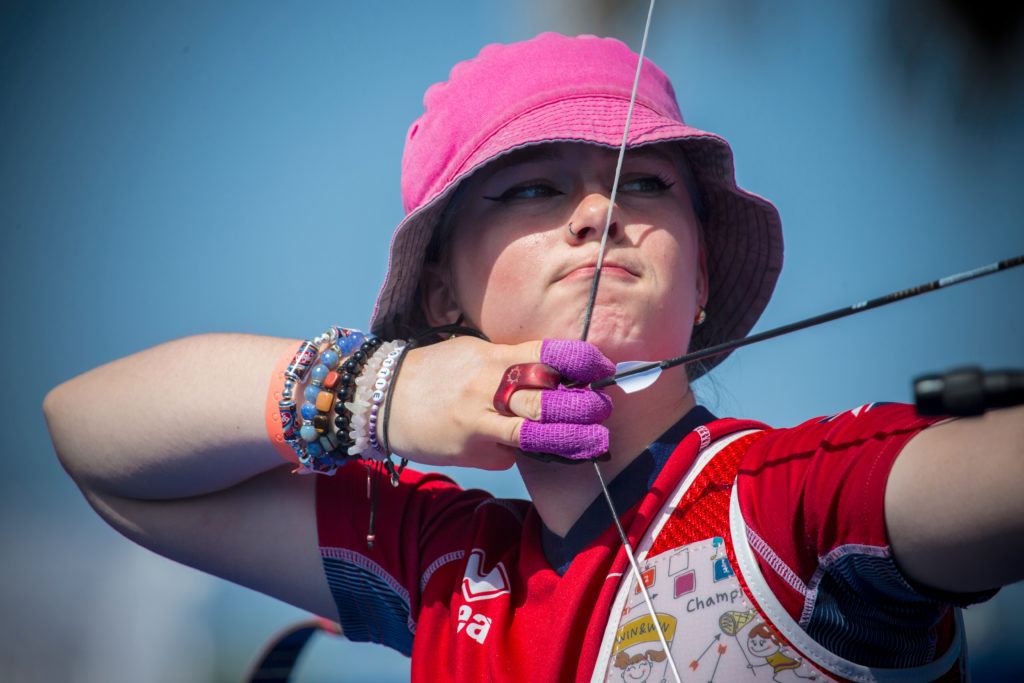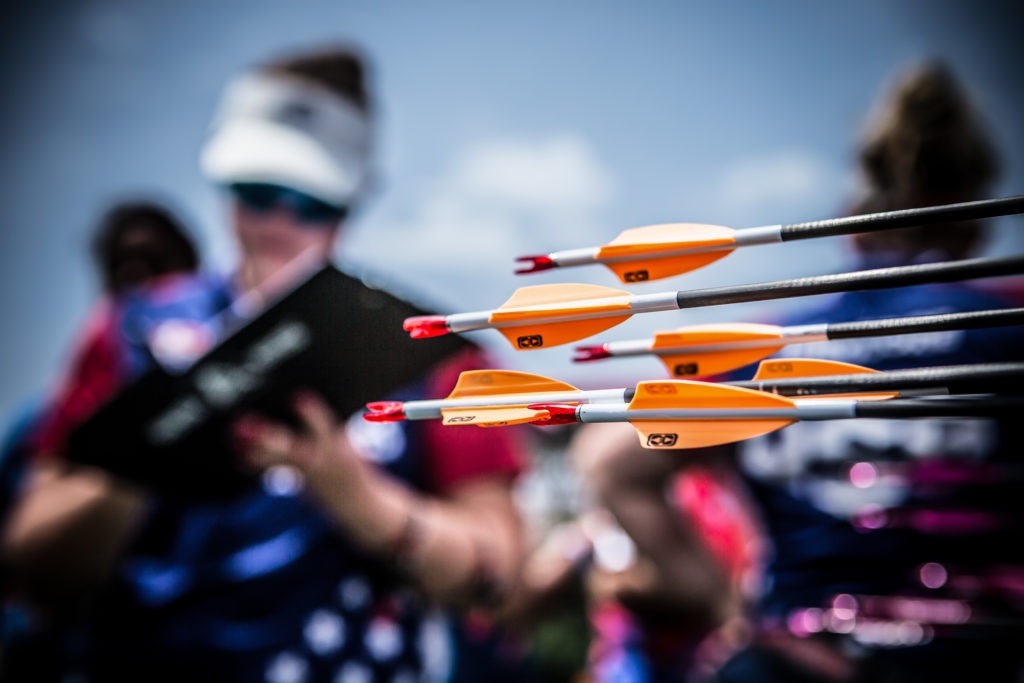Mimi Landström takes a look at one of the most common hang-ups in target archery
For recurve archers, the clicker can be a love/hate relationship. Nearly every international recurve archer shoots with a clicker, so why, and how, can it cause so many issues? Why is there so much trouble in such a small piece of equipment?
Sometimes – a little pedantically – called a ‘draw length indicator’, the clicker is certainly one of the simplest innovations to come to target archery since its introduction at the end of the 1950s. It helps to keep a consistent shot (provided it is used properly) and gives the correct draw length each time. Some archers may find they stumble across issues with a clicker in their archery career, and it is never far from any discussion about target panic. Doing clicker drills could help eliminate any hang-ups or flinches that might come with a clicker.
Personally, I strongly believe in trusting your shot but also moving your clicker if you need to. Some days your muscles might be stronger or weaker, and therefore you have more power or less power in your shot. It works both ways. If you are feeling weaker than the day before, moving the clicker forward a touch does not hurt anyone, provided you continue to make those good shots.
However, moving the clicker out of laziness will likely start a downward spiral. It can be a dangerous game, however, moving your clicker. You need to know what is right for your shot and how you can adjust, how much you can adjust, and what the sweet spot is to make sure you are shooting strong with the clicker position.
Also, shooting shorter distances and longer distances will change where your clicker needs to be, because the angle that the archer is aiming will change their draw length. Remember to think about this when indoor season comes around, or you might be struggling or over-stretching to get through the clicker and hindering yourself.
Many elite and international archers have their own tips on how to get through the clicker without hang-ups, so accept them and shoot with issues. We also asked two two elite level archers to help with some big questions we had.
The pro view: Crispin Duenas
Crispin Duenas, of Canada, has been an international archer on the scene for many years. He took a step back this year, but remains an elite level archer. We spoke to him about how he works the clicker.
How do you get through the clicker? Do you push, pull, or both?
To get through the clicker, I do a combination of pushing and pulling. Obviously, I have to pull in order to bring the string back to my anchor position, however, once I reach that anchor position, I engage a pushing motion from my front shoulder.
This is opposed to pushing from the elbow, using the triceps. I leave the pushing motion until the last possible moment because there is a limited amount that a shoulder can extend towards the target. In my opinion, the pushing motion is important because the riser will want to push back into your bow hand while at full draw. The push counteracts this force and prevents any collapsing while at full draw.
Do you do any clicker drills – if yes, which ones?
I have not done many clicker drills lately. However, one drill I do enjoy doing from time to time is to shoot 70m without a clicker. This exercise tells me two things: how much control I have of my release, and whether or not my perceived full draw is my actual full draw. The latter is shown by any height changes in my arrows on the target. Low arrows indicate that I am pulling to a length shorter than my clicker position, and therefore the arrows are not being pushed with as much poundage.
How much of the point do you leave to expand through the clicker?
I will generally have about one to two millimetres of the point left to expand through the clicker. Again, there isn’t much room for the body to physically expand through the clicker, so having a comfortable miniscule amount to expand puts less strain on the archer and their shoulders.
What clicker do you use and is there a reason for that specific one?
I currently use the Beiter Micro Clicker with a Beiter 0.25 clicker. I have used the 0.25 clicker since I started archery 22 years ago, and I have got accustomed to the sound and feel of the clicker. When Beiter released the Micro Clicker, I jumped at the opportunity to have complete control over the fine draw length adjustments that the Micro Clicker has to offer.
Just one click on the dial moves your clicker forward or back by 0.1mm. Archers can use this to their advantage when changing distances from 70m to 18m to account for the change in arm angle.
What advice would you give to people who have just started using a clicker?
For those starting out with a clicker, my advice is to shoot a lot with the clicker at a blank target. Get used to the feeling of the clicker, the feeling of the shot, and proper expansion through the clicker. If you start aiming with it too soon, you run the risk of developing anxiety while using it. This could lead to bigger problems in the future.
Once you have a good understanding of how to shoot with the clicker, start shooting on a big target at close distance (for example, a 122cm face at 18m). This will help you get used to aiming while expanding through the clicker. As you get better, you can start to shoot longer distances, or smaller targets.
The pro view: Penny Healey
Penny Healey, from Great Britain, has had a very successful debut season on the senior international scene. She explained to us her views on the clicker and a different insight into how she works it.
How do you get through the clicker?
To get through the clicker I do both a pushing and pulling motion. I push through my front arm towards the target, so I can get through the clicker as well as achieving a strong front arm when I release. To pull, I pull with the scapular and imagine my elbow doing a circle around me, so I can keep it tight into my face and achieve an attacking release.
Do you do any clicker drills?
I personally do not do clicker drills, but if I’m struggling with timing, I tend to do 10-second drills. This is where you give yourself 10 seconds to come up and shoot, a 10-second rest and normally I would do this for a few ends. I also put a timer on but deduct 10-20 seconds from it. For example, if I’m sticking to 180 second timings, I’ll put the timer down to 160 second so I have to commit to the shot.
How much of the point do you leave to expand through the clicker?
This is a difficult question to answer perfectly. With my technique I have an aiming point which is about an inch before I reach full draw. From this point I continue to full draw and then expand from the front and back until my clicker goes off. During this process there is no point at which I pause at full draw because that makes it hard to re-engage the muscles to start pulling again.
What clicker do you use and why?
I use a Wiawis Arc Clicker. I have used the Wiawis carbon clickers for many years and I find they give a very consistent and positive “click” when coming through. I changed to the Arc clicker when they came out as the curve makes it easier to load the arrow and the extra pressure it creates gives an even more positive click than before.
How far into your archery career did you start using a clicker?
I didn’t start using a clicker for around 18 months. Once I was accepted on the Talent Identification and Development Programme at Archery GB, I was encouraged to use a clicker. Looking back, I didn’t really understand how to use it at the time, I would pull through aim and release. As I developed as an archer, I started to understand the reasonings and the concept of the clicker and now it feels weird if I’m asked not to use it.
What advice do you have to people who have just started to use a clicker?
If you are just starting with a clicker or are struggling with it, the best advice I’ve ever been given is that you control the clicker, it doesn’t control you. I found this really helped when I was struggling with clicker control and my timing.
Key takeaways
The most important thing to remember is to make sure that you are in control of the clicker. Do not let it rule you! Your shot timing and your shot process is what makes your shot, not the clicker. Pushing through with a strong front arm is a useful way of getting through the clicker, whilst also executing and pulling with your back arm and scapula.
Clicker drills are less common these days, but here are a couple of clicker drills that have been recommended by archers over the years:
- In front of a blank boss, draw up and make a full draw through to expansion, let the clicker drop/click and hold or expand some more before coming down. Work on this until the flinch is eliminated, this will help in the long run to make sure you control the clicker.
- If you struggle shooting with other clickers going off around you, make sure you practice shooting with people more and more! Do not be afraid of shooting while someone else is at full draw. While it might not be easy at the start: you’ll get there.


